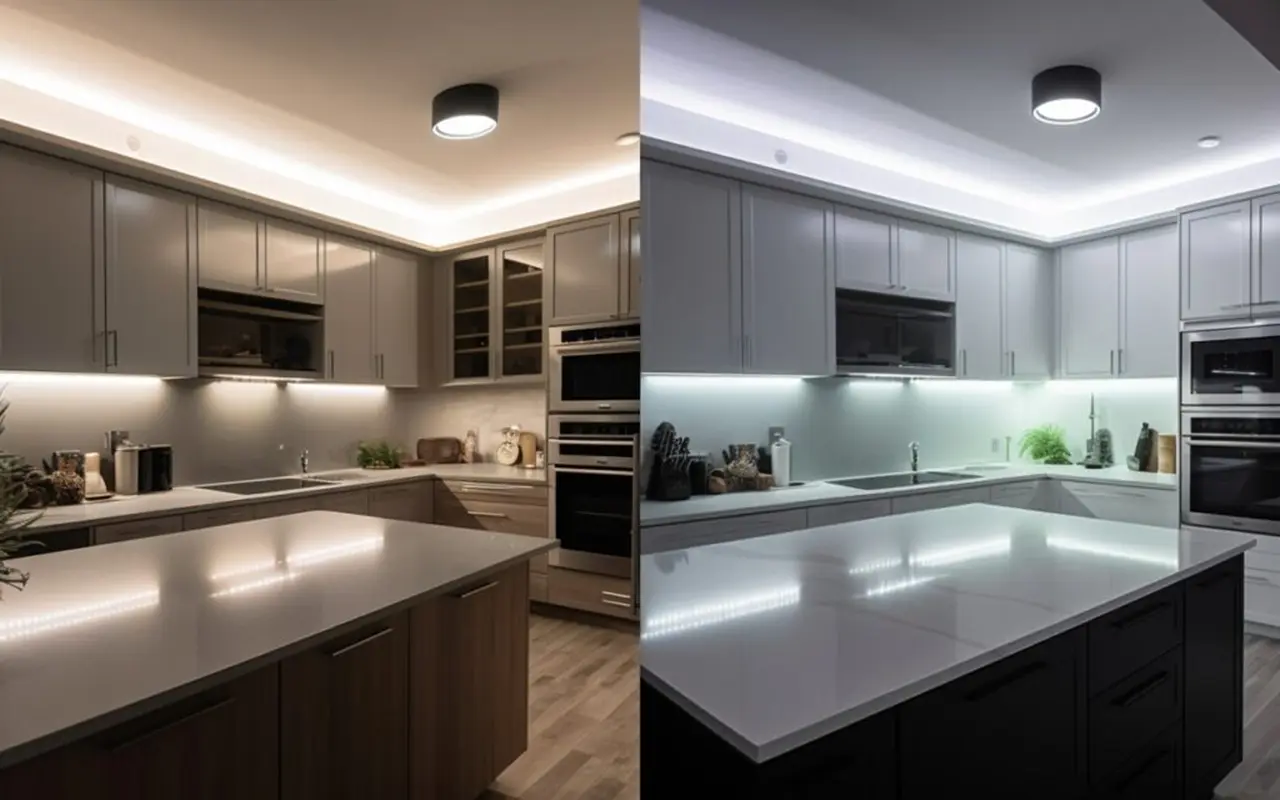LED lighting has revolutionized how we illuminate our spaces, offering energy efficiency and a range of color temperatures to suit different needs. Among these, 5000K and 6000K LED lights stand out for their unique characteristics. This article delves into the world of these two color temperatures, exploring their differences, applications, and how to choose the right one for your needs.
The Basics of LED Lighting and Color Temperature
LED (Light Emitting Diode) lighting is known for its energy efficiency and longevity. A key aspect of LED lighting is color temperature, measured in Kelvin (K). This measurement indicates the hue of the light emitted, affecting the ambiance and mood of a space.
- 5000K Lighting: Often referred to as “daylight” or “cool white,” this lighting emits a bright and crisp white light, akin to natural light on a clear day.
- 6000K Lighting: This cooler, bluish-white light resembles the noontime sun and is often termed “cool daylight.”
5000K vs 6000K: What’s The Difference

- Brightness: Both are bright, but 6000K tends to have a slightly higher luminosity, making spaces appear more vibrant.
- Color Temperature: 5000K gives off a neutral white light, while 6000K emits a cooler, bluish hue.
- Energy Efficiency: Modern LED lights in both color temperatures are energy-efficient, though efficiency varies by manufacturer and product.
Applications and Settings
- Workspaces: 5000K is ideal for offices and studios, reducing eye strain and increasing focus. 6000K suits areas requiring detailed tasks, enhancing contrast.
- Homes: 5000K is perfect for kitchens, bathrooms, or reading areas, providing balanced light. 6000K is best used sparingly, perhaps in task lighting.
- Outdoor Environments: 5000K is great for general outdoor lighting, while 6000K is useful for security purposes or areas requiring bright illumination.
Choosing the Right Color Temperature
- Purpose: Determine the primary purpose of the space. For relaxation, lean towards 5000K. For detailed tasks, 6000K might be better.
- Existing Decor: Warmer decors might clash with 6000K lighting.
- High Density LED Strip: For areas requiring intense illumination, consider the High Density LED Strip, offering up to 180lm/W.
Conclusion and Recommendation
Both 5000K and 6000K have unique advantages. The choice depends on personal preference and the specific needs of a space. For a balanced, versatile light, 5000K is a safe bet. However, for spaces where brightness and contrast are paramount, 6000K shines through. Always consider the function of the room and the mood you want to set before making a decision.
In the realm of LED lighting, where color temperatures like 5000K and 6000K play a significant role, the Unitop 3D LED Neon Flex Rope Light 1616 emerges as a versatile and innovative option. This product exemplifies the advancements in LED technology, offering unique features that can enhance various lighting projects.
In summary, the selection between 5000K and 6000K LED lighting hinges on the intended use, desired ambiance, and personal preferences. Whether it’s for enhancing productivity in a workspace, creating a cozy atmosphere at home, or ensuring clear visibility outdoors, understanding these differences can guide you to make an informed choice for your lighting needs.
For the latest in LED lighting innovations and trends, subscribe to Unitopledstrip. Your ultimate guide for all things LED. Join us and stay enlightened!
Leave a Reply